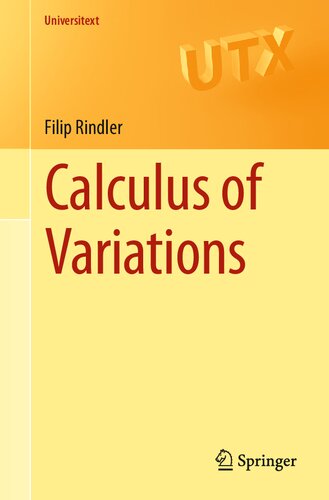

Most ebook files are in PDF format, so you can easily read them using various software such as Foxit Reader or directly on the Google Chrome browser.
Some ebook files are released by publishers in other formats such as .awz, .mobi, .epub, .fb2, etc. You may need to install specific software to read these formats on mobile/PC, such as Calibre.
Please read the tutorial at this link. https://ebooknice.com/page/post?id=faq
We offer FREE conversion to the popular formats you request; however, this may take some time. Therefore, right after payment, please email us, and we will try to provide the service as quickly as possible.
For some exceptional file formats or broken links (if any), please refrain from opening any disputes. Instead, email us first, and we will try to assist within a maximum of 6 hours.
EbookNice Team

Status:
Available0.0
0 reviewsStarting from ten motivational examples, the book begins with the most important aspects of the classical theory, including the Direct Method, the Euler-Lagrange equation, Lagrange multipliers, Noethers Theorem and some regularity theory. Based on the efficient Young measure approach, the author then discusses the vectorial theory of integral functionals, including quasiconvexity, polyconvexity, and relaxation. In the second part, more recent material such as rigidity in differential inclusions, microstructure, convex integration, singularities in measures, functionals defined on functions of bounded variation (BV), and G-convergence for phase transitions and homogenization are explored.
While predominantly designed as a textbook for lecture courses on the calculus of variations, this book can also serve as the basis for a reading seminar or as a companion for self-study. The reader is assumed to be familiar with basic vector analysis, functional analysis, Sobolev spaces, and measure theory, though most of the preliminaries are also recalled in the appendix.